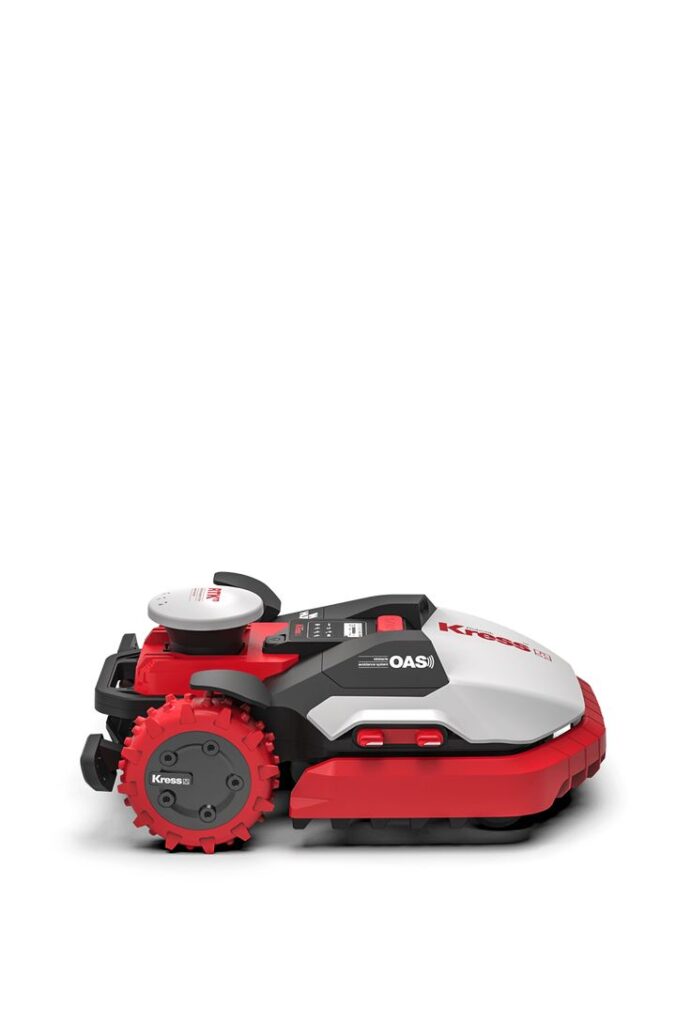In today’s interconnected world, wireless connectivity is no longer a luxury but a fundamental expectation for smart devices. Robotic lawn mowers are no exception, with modern models increasingly featuring robust wireless capabilities that transform them from mere garden tools into intelligent, remotely controllable appliances. For homeowners seeking maximum convenience, real-time monitoring, and seamless integration into their digital lives, a robot mower with strong wireless connectivity is an indispensable choice.
The Importance of Wireless Connectivity in Robot Mowers
Wireless connectivity in a best robot mower serves several crucial functions, enhancing both user experience and the mower’s operational efficiency:
- Remote Control and Monitoring: The most immediate benefit is the ability to control and monitor your mower from anywhere using a smartphone app. You can start, stop, pause, send it home, check its battery level, and view its mowing progress in real-time, whether you’re at work, on vacation, or simply inside your home.
- Scheduling and Customization: Wireless connectivity allows for easy and flexible scheduling. You can set up complex mowing patterns, define multiple zones, and adjust cutting heights or other settings directly from your device, often with drag-and-drop interfaces.
- Firmware Updates (OTA): Over-the-air (OTA) updates are vital for keeping your mower’s software current. Manufacturers can push out performance improvements, bug fixes, and even new features wirelessly, ensuring your mower always operates with the latest capabilities without manual intervention.
- Diagnostics and Alerts: If your mower encounters an issue (e.g., stuck, low battery, blade error), it can send instant notifications to your smartphone, allowing you to address problems promptly. Some advanced systems can even provide diagnostic information to help you troubleshoot.
- Smart Home Integration: Wireless connectivity is the gateway to integrating your robot mower with broader smart home ecosystems like Amazon Alexa, Google Assistant, or IFTTT (If This Then That). This enables voice control and the creation of automated routines that link your mower’s actions to other smart devices or external conditions.
- Anti-Theft Features: For models with GPS tracking and geofencing, wireless connectivity (often cellular) is essential for transmitting location data and sending security alerts if the mower leaves its designated area.
Types of Wireless Connectivity
Robot mowers primarily utilize a few key wireless technologies:
- Wi-Fi (2.4 GHz): This is the most common form of connectivity. Mowers connect to your home Wi-Fi network, allowing for control within your network’s range. It’s excellent for local control and data transfer, but its range can be limited in very large yards.
- Bluetooth: Often used for initial setup or for very short-range control when you’re standing right next to the mower. It’s less common for primary remote operation.
- Cellular (4G/5G): Found in premium models, cellular connectivity provides the most robust remote control and tracking capabilities, as it doesn’t rely on your home Wi-Fi network’s range. This is ideal for large properties or if you need to manage the mower from outside your home’s Wi-Fi coverage. Cellular plans usually involve a subscription fee.
Top Picks for Wireless Connectivity
When seeking a robot mower with excellent wireless capabilities, prioritize models that offer:
- Reliable Wi-Fi/Cellular Modules: Look for mowers with strong antennas and stable connections to ensure consistent communication. User reviews often provide insight into real-world connectivity performance.
- Feature-Rich Smartphone Apps: A well-designed, intuitive app is crucial. It should offer comprehensive control, detailed status updates, easy scheduling, and clear notifications.
- Voice Assistant Compatibility: If you use Alexa or Google Assistant, ensure the mower explicitly supports these platforms for hands-free operation.
- Over-the-Air Update Capability: This ensures your mower stays current with the latest software improvements without manual intervention.
- Integrated GPS Tracking (with Cellular): For maximum peace of mind regarding theft and precise location monitoring, a cellular-enabled model with GPS is invaluable.
Considerations for Optimal Wireless Performance
- Network Coverage: Assess your lawn’s Wi-Fi coverage. If you have dead zones, consider Wi-Fi extenders or a cellular-enabled mower.
- Router Placement: Position your Wi-Fi router optimally to maximize outdoor signal strength.
- Subscription Costs: Be aware that cellular connectivity often comes with an ongoing subscription fee.
- Security: Ensure the mower’s wireless connection is secure and that the manufacturer provides regular security updates.
Conclusion
Wireless connectivity is transforming the robot mower experience, offering unparalleled convenience, control, and peace of mind. By choosing a model with robust Wi-Fi or cellular capabilities, a feature-rich app, and smart home integration, you can elevate your lawn care to a truly automated and intelligent system, managed effortlessly from the palm of your hand.


